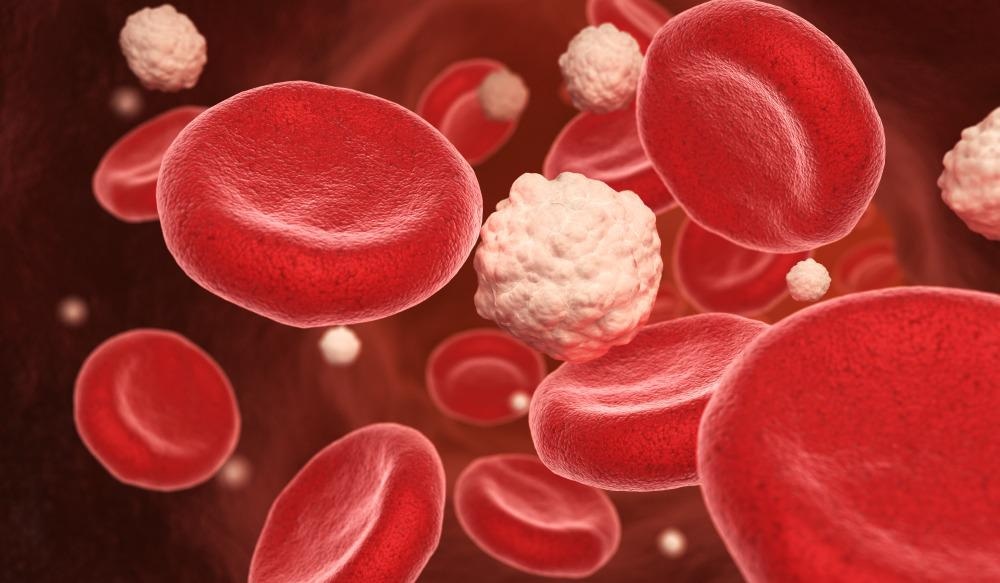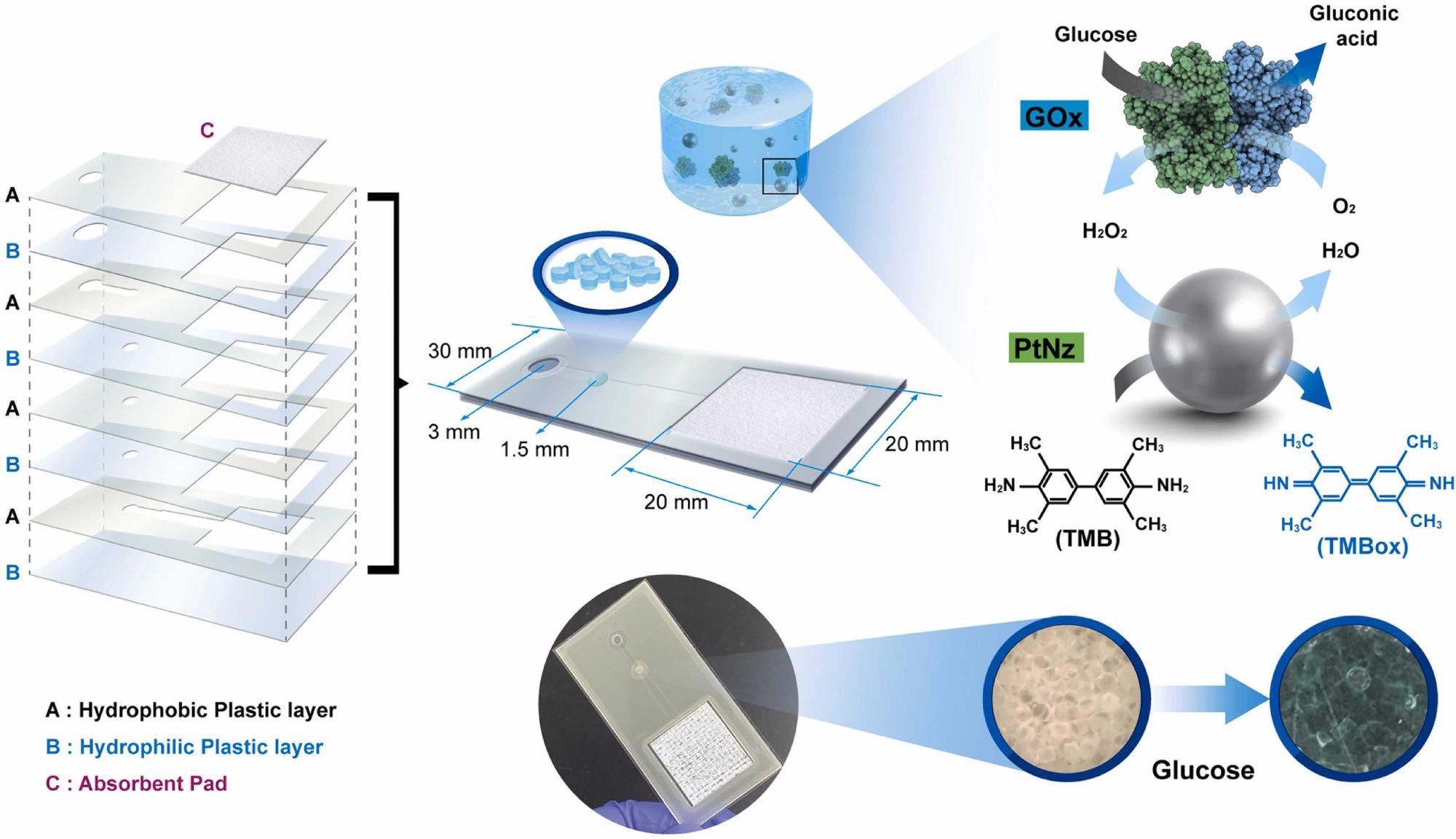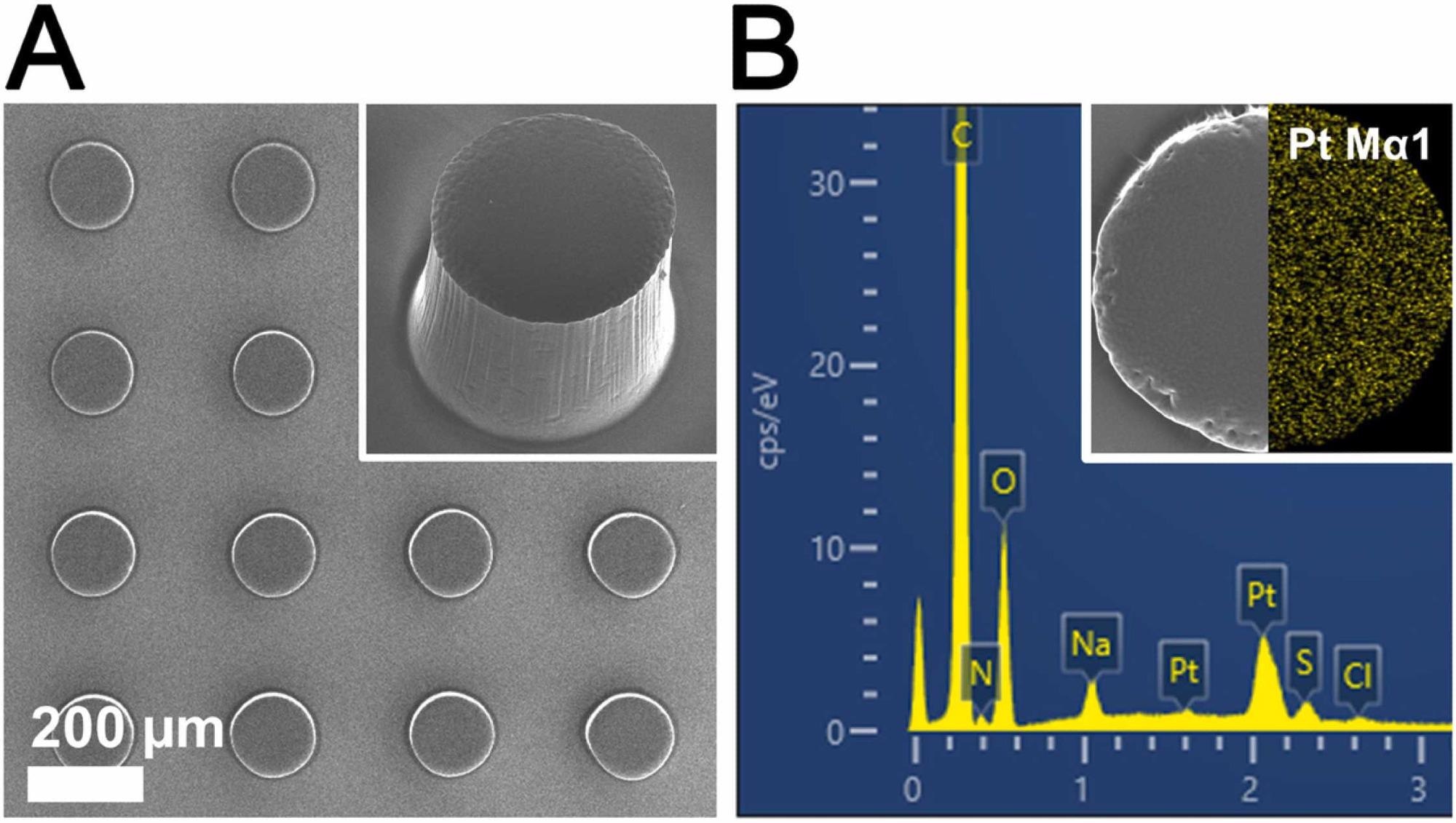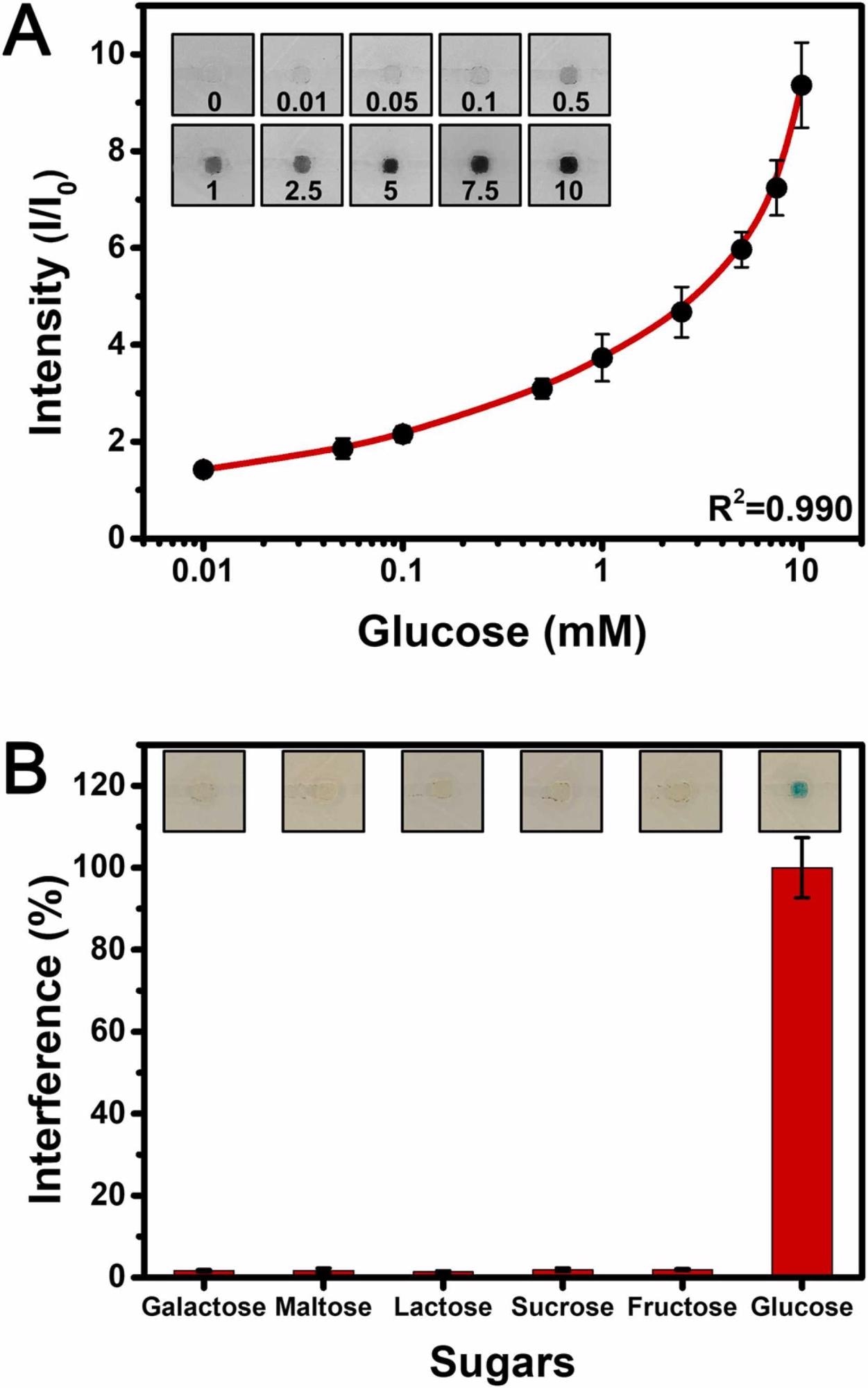New research published in the journal, Sensors and Actuators B: Chemical, aims to explore the application of nanozymes for glucose detection to aid with endocrine and metabolic disorders.

Study: Platinum nanozyme-hydrogel composite (PtNZHG)-impregnated cascade sensing system for one-step glucose detection in serum, urine, and saliva. Image Credit: Tatiana Shepeleva/Shutterstock.com
The use of enzyme-mimetic nanomaterials, or nanozymes, have gained traction over recent years, with their ability to possibly replace natural enzymes, especially for the application of biochemical sensing.
Nanozymes
Nanozymes can be used as alternatives to natural enzymes, with activities comparable to peroxidase, oxidase and catalase enzymes within biochemical analysis, catalysis and environmental remediation.
Nanozymes can be more beneficial for use than natural enzymes due to their low-cost preparation method, high stability, and mass production ability. Additionally, these nanomaterials also demonstrate catalytic properties that can be modulated through varying the size, structure, composition, and surface treatment, which can alter its impact.
These variations, which can affect its functionality, enable nanozymes to be used for a range of applications. This can include use in diagnostic medicine, targeted therapy, antimicrobial activity as well as biosensing.

Figure 1. Design and operation principle of the PtNZHG-based glucose sensor. © Park, J., Choi, J. and Han, D., (2022)
The Importance of Glucose
The use of nanozymes for detecting glucose can aid the advancement of medicine. Glucose is a critical biomolecule for all living organisms as a major energy source.
Glucose is associated with blood sugar levels and is a critical component in ensuring mechanisms within the body are working at their optimum standard.
Glucose can be taken into the body through carbohydrates, such as bread, which is broken down and used as fuel.
Maintaining optimum levels of this biomolecule is important as when they are abnormal, this can result in endocrine and metabolic disorders such as diabetes mellitus. This can be dangerous, as it can subsequently cause kidney failure, blindness, and heart disease.
The World Health Organization has stated the effect abnormal glucose levels can have with resulting disorders has reached 400 million people; this illustrates the critical need for novel strategies to detect glucose in order to aid in reducing glucose-related disorders.

Figure 2. (A) SEM images of PtNZHG. (B) Energy-dispersive X-ray spectrum of PtNZHG and the corresponding results of Pt mapping. © Park, J., Choi, J. and Han, D., (2022)
Novel Approach to Reduce Glucose-Related Disorders
The requirement for glucose detection approaches consists of being simple, cost-effective, and sensitive. The researchers of this study have provided a strategy that aims for a fast, specific, and intuitive spectrometric response under mild conditions.
Glucose detection is commonly attained through enzyme-catalyzed reactions and previous research has included the use of nanozymes instead of natural enzymes for determining glucose levels with cascade reactions that involve peroxide-like enzymes and glucose oxidase.
This comprises a biomimetic cascade reaction which starts with glucose oxidase (Gox)-catalyzed glucose oxidation, and then results in gluconic acid and H2O2.
The use of peroxidase-like nanozymes catalyzes the reaction between H2O2 and a chromogenic substrate, which then would produce a colored product. The color change is converted into a glucose concentration.
The study has included bovine serum albumin (BSA)-templated platinum nanozymes (PtNZs) with peroxidase-like activity, which consisted of combining GOx and embedded into polyethylene glycol (PEG) hydrogel.
The hydrogel was used as a 3D matrix for the PtNZs due to its hydrophobicity, porosity, and non-toxic properties.
These nanozymes were incorporated at the detection zone of a plastic chip with 3D hydrophilic microfluidic channels.

Figure 3. (A) UV–vis absorption spectra obtained after the PtNZ-promoted oxidation of (a) TMB, (b) ABTS, and (c) OPD with H2O2. Inset: corresponding images before and after nanozyme addition. Time-dependent absorbance of TMB (ox) at 655 nm obtained in the presence of four PtNZs (0.5 mg mL−1) (B) with and (C) without H2O2. Reaction conditions: 0.1 mg mL−1 TMB, 0.1 mg mL−1 ABTS, or 0.4 mg mL−1 OPD; 10 mM H2O2 in PC buffer (50 mM, pH 5.0) at room temperature (25 °C). © Park, J., Choi, J. and Han, D., (2022)
Translational Significance
The catalytic cascade reaction for colorimetric glucose detection occurs at the 3D hydrogel matrix of platinum nanozyme-hydrogel (PtNZHG) composite, with reduced diffusion resistance of unstable intermediates and due to this the colored product that is produced is more concentrated in the detection zone. This illustrates the sensitivity of this one-step sensing system for detecting glucose.
The development of a PtNZHG sensor demonstrated high catalytic and specific peroxidase-like activity with effective catalytic cascade reactions being produced for glucose detection. This approach comprised high sensitivity and selectivity, with a broad dynamic range of 0.01-10 mM and a detection limit of 3.9 µM. Interestingly, this detection can be completed within 15 minutes with the analysis being performed through a smartphone camera.
Additionally, the innovative component of this strategy also includes the versatility of various fluid types, such as serum, urine and saliva, as well as having long-term stability with reproducible results after even after two months of storage.
The translation of this sensing system would enable enhanced detection of glucose, a significant biomolecule that can cause both endocrine and metabolic disorders; this is specifically significant as the World Health Organization has stated diabetes as the ninth leading cause of death in 2019, with approximately 1.5 million deaths.
The use of this one-step sensing system can aid in earlier diagnosis of disorders as well as treatments to reduce the effect of these diseases and glucose abnormality in patients.
Additionally, this research can also lead to further studies on the use of nanozymes for other enzyme-based biosensors to enhance the detection of other concerning biomolecules for effective therapeutics.

Figure 4. (A) Effect of glucose concentration on signal intensity. Inset: Corresponding photographic images of the detection zone. (B) Selectivity toward glucose against other interfering sugars (fructose, galactose, lactose, maltose, and sucrose) determined at sugar levels of 5 mM. © Park, J., Choi, J. and Han, D., (2022)
Reference
Park, J., Choi, J. and Han, D., (2022) Platinum nanozyme-hydrogel composite (PtNZHG)-impregnated cascade sensing system for one-step glucose detection in serum, urine, and saliva. Sensors and Actuators B: Chemical, 359, p.131585. Available at: https://www.sciencedirect.com/science/article/pii/S0925400522002271
Further Reading:
Huang, Y., Ren, J. and Qu, X., (2019) Nanozymes: Classification, Catalytic Mechanisms, Activity Regulation, and Applications. Chemical Reviews, 119(6), pp.4357-4412. Available at: https://doi.org/10.1021/acs.chemrev.8b00672
Who.int. (2022). Diabetes. [online] Available at: https://www.who.int/news-room/fact-sheets/detail/diabetes
Disclaimer: The views expressed here are those of the author expressed in their private capacity and do not necessarily represent the views of AZoM.com Limited T/A AZoNetwork the owner and operator of this website. This disclaimer forms part of the Terms and conditions of use of this website.